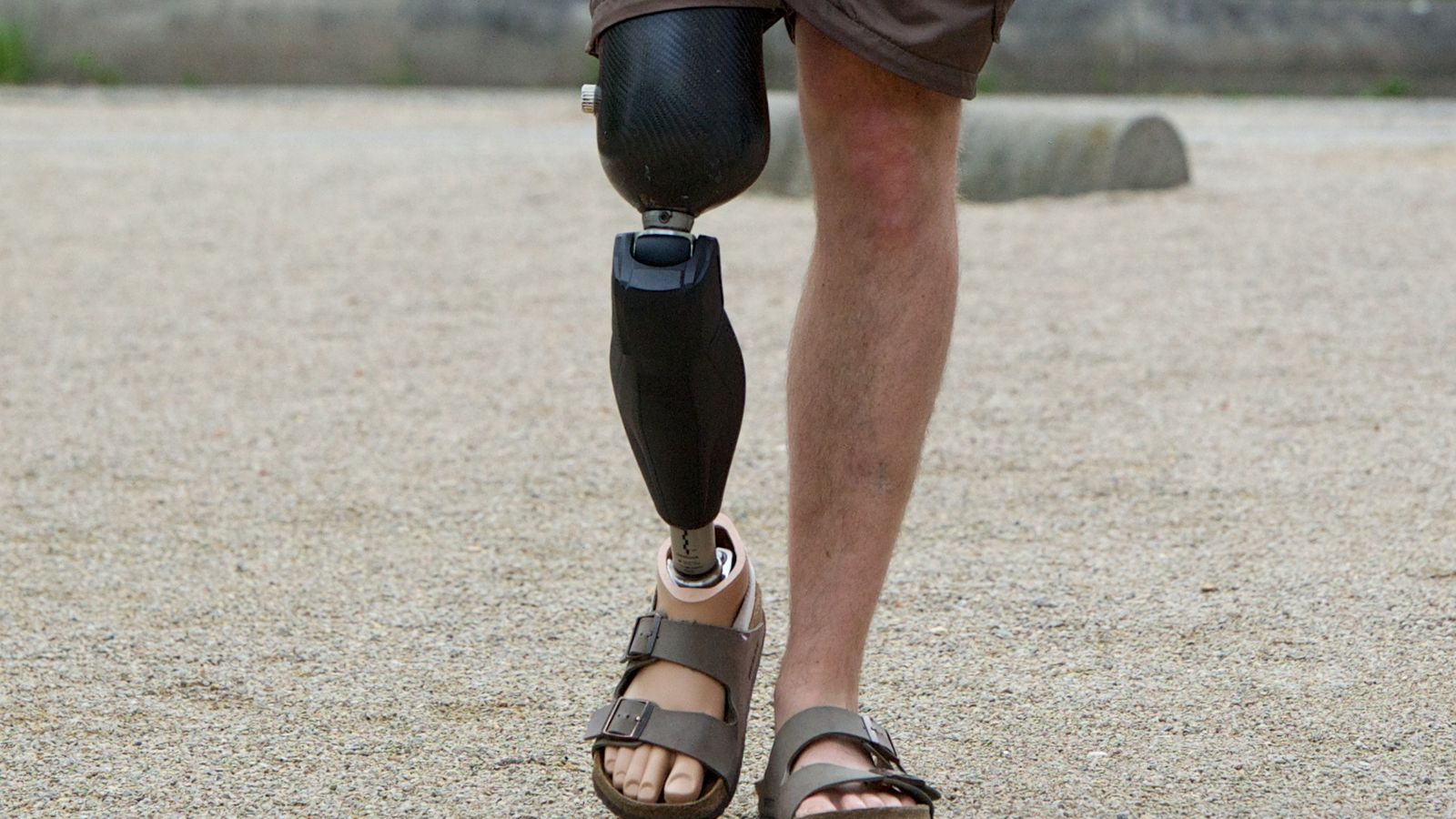Experts are testing John McFall’s leg to make sure it complies with NASA standards and a decision is expected to be made after a feasibility study ends in 2025.
By Dylan Donnelly, news reporter
The world’s first disabled astronaut has sparked concerns his prosthetic leg could be poisonous for the air inside a space station.
John McFall, a former British Paralympian, will have tests carried out on the leg by the European Space Agency (ESA) to ensure it does not give off dangerous toxic gases over time.
The 42-year-old was selected to join the ESA in November 2022, and is currently undergoing astronaut training and a feasibility project with a view to boarding the International Space Station (ISS).
But speaking to The Daily Telegraph, Mr McFall explained his prosthetic socket “is carbon fibre and it’s got like a high-density foam on the inside”, which could give out gases in the sealed space station.
He then said: “The carbon fibre socket is impregnated with a resin. The foam is made with polymers.
“Those materials will continue to give off gases to one degree or another and in an environment like the ISS where the air is constantly recycled, any significant amount of gases that are produced from a material will be amplified over a period of time because they’re not filtered out.”
The feasibility study looks to help the ESA assess the impact of being an amputee and wearing a prosthesis while living and working in space, and test possible solutions to any problems.
Experts at the ESA are testing the leg to make sure it complies with NASA standards. A decision on whether Mr McFall will fly on a mission into space is expected to be made after the study ends in 2025.
Mr McFall lost his right leg in a motorcycle accident when he was 19 and went on to become a professional track and field athlete.
He competed for Great Britain and Northern Ireland at the Paralympic Games, winning a bronze medal at the Beijing Games in 2008.
Read more:
North Korea celebrates latest rocket launch – which they say was ‘spy satellite’
Extremely high-energy particle detected falling to Earth
Speaking last year after being selected, Mr McFall said the opportunity was “inspiring and exhilarating”.
He added: “With my broad scientific background and a vast range of experiences, I felt compelled to try and help ESA answer this question: Can we get someone with a physical disability to do meaningful work in space?”
No major Western space agency has ever put a “para-astronaut” into space, according to the ESA.

Dr. Thomas Hughes is a UK-based scientist and science communicator who makes complex topics accessible to readers. His articles explore breakthroughs in various scientific disciplines, from space exploration to cutting-edge research.








